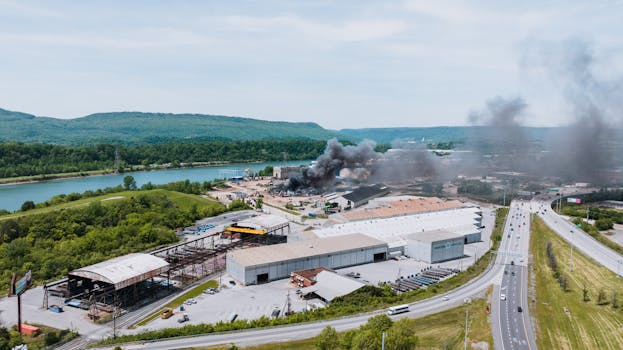Insurance Innovations for Natural Disasters: Risk Management Solutions
In recent years, natural disasters have become more frequent and severe than ever before. From hurricanes and wildfires to floods and tornadoes, these catastrophic events have caused significant damage and loss of life, costing billions of dollars in damages. As a result, the importance of risk management solutions has become increasingly evident for both individuals and businesses. Insurance plays a critical role in mitigating the financial impact of natural disasters, and with advancements in technology and innovation, new and improved solutions are continuously being developed to protect against these unpredictable events. In this article, we will explore some of the latest insurance innovations for natural disasters and their potential to revolutionize the way we approach risk management.
The Role of Insurance in Natural Disaster Risk Management
Before diving into the specific innovations, it is essential to understand the role of insurance in natural disaster risk management. Insurance is based on the principle of risk-sharing, where individuals or businesses pay a premium to an insurance company in exchange for coverage against potential losses. In the case of natural disasters, insurance helps lessen the financial burden on individuals and businesses, enabling them to recover and rebuild after a disaster strikes.
Technology-Driven Solutions
Blockchain for Claims Processing
One of the latest innovations in insurance for natural disasters is the use of blockchain technology for claims processing. Blockchain is an advanced digital ledger that allows for secure and transparent storing and sharing of data. When it comes to insurance claims, this technology can streamline the process by automating verification and settlement, reducing the time and resources needed for manual processing. This can be particularly beneficial in the aftermath of a natural disaster when the influx of claims can be overwhelming for insurance companies.
AI and Predictive Analytics for Risk Assessment
Another technology-driven solution that is gaining traction in the insurance industry is the use of artificial intelligence (AI) and predictive analytics for risk assessment. By analyzing vast amounts of data, AI can identify patterns and trends that can help insurance companies better understand the potential risks associated with natural disasters. This allows them to develop more accurate risk models, leading to improved pricing and coverage decisions. Furthermore, predictive analytics can help insurers anticipate which areas are most susceptible to specific natural disasters, allowing them to proactively offer coverage and mitigate potential losses.
Collaboration and Partnerships
Public-Private Partnerships (PPPs)
In the past, governments were primarily responsible for natural disaster relief and recovery efforts. However, with the increase in the frequency and severity of these events, governments are now turning to the private sector for support. This has led to the rise of public-private partnerships (PPPs) where governments and insurance companies collaborate to develop financial solutions for natural disaster risk management. These partnerships allow for the sharing of resources and expertise, resulting in more comprehensive and efficient disaster response and recovery efforts.
Cross-Industry Collaboration
In addition to PPPs, the insurance industry is also collaborating with other industries to develop innovative solutions for natural disaster risk management. For example, insurance companies are partnering with technology companies to leverage cutting-edge advancements, such as drones and satellite imagery, for more accurate and timely claims assessments. They are also working with construction and engineering firms to develop sustainable infrastructure that can withstand natural disasters and minimize damage and loss.
Microinsurance
Protecting the Vulnerable
One of the biggest challenges when it comes to insurance and natural disasters is ensuring that everyone has access to coverage. This is where microinsurance comes in. Microinsurance provides coverage to low-income individuals and communities, who are often the most vulnerable to natural disasters. By offering affordable and tailored insurance plans, microinsurance can help protect these individuals and communities from financial devastation in the event of a natural disaster.
Parametric Insurance
Another form of microinsurance that has gained popularity in recent years is parametric insurance. Unlike traditional insurance, which requires the evaluation and verification of physical damage, parametric insurance pays out based on predetermined trigger points, such as wind speed or earthquake magnitude. This type of insurance is ideal for natural disasters, as it allows for quicker and more efficient claims disbursement, reducing the financial burden on both insurers and policyholders.
Conclusion
In conclusion, insurance remains a critical component of natural disaster risk management. With the continuous advancements in technology and innovative collaborations, new solutions are emerging to help individuals and businesses protect themselves against the financial impact of these unpredictable events. Whether it is through the use of blockchain technology, partnerships with other industries, or microinsurance, the insurance industry is at the forefront of finding solutions to mitigate the risks associated with natural disasters. As we continue to face the challenges of climate change and increasing natural disasters, these insurance innovations will play a crucial role in helping us better prepare and recover from these catastrophic events.










